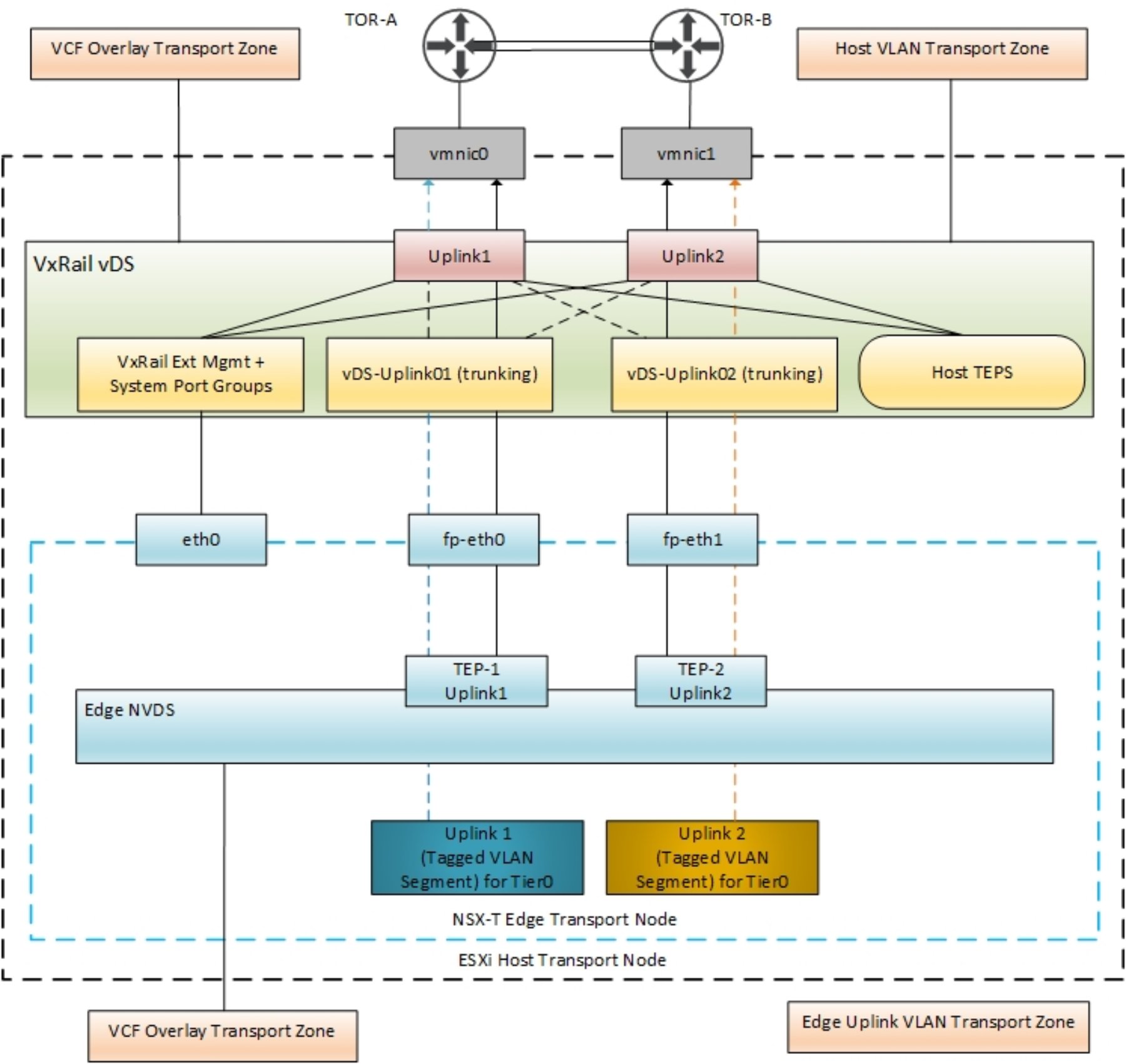Home > Integrated Products > VxRail > Guides > Architecture Guide—VMware Cloud Foundation on VxRail: VCF 5.x on VxRail 8.x > NSX Edge Node design
NSX Edge Node design
-
The Edge Node design for the Mgmt WLD deployment with AVN deployed follows the VCF design. Starting with VCF 4.3, the Edge Nodes are deployed as a Day-2 activity from SDDC Manager. For the Mgmt WLD, two Edge Node VMs are deployed in the Mgmt WLD VxRail cluster. The Edge Nodes themselves have an N-VDS or NSX-managed switch that is configured on them to provide connectivity to external networks. The individual interfaces fp-eth0 and fp-eth1 on the N-VDS connect externally through a vDS using two different uplink port groups that are created in trunking mode. The vDS can be either a VxRail system vDS or a dedicated NSX vDS, depending on what network layout is required for the system and NSX traffic. Two TEPs are created on the Edge N-VDS to provide east-west connectivity between the Edge Nodes and the host transport nodes. This traffic is active/active using both uplinks, which are defined in the uplink profile. The management interface eth0 is connected to the vDS management port group. The following figure shows the connectivity for the Edge Nodes running on the ESXi host in the Mgmt WLD cluster:


Figure 29. Mgmt WLD - Edge Node connectivity with single vDS
Note: The uplink port groups used to connect the Edge VM overlay interfaces are configured as trunk because the N-VDS does the VLAN tagging. The uplink profile defines the VLAN for the Edge overlay.
The Edge Node design for the VI WLD is similar to the Mgmt WLD. If the Edge automation is used to deploy the Edge cluster for a VI WLD, the same network configuration can be achieved. The following figure shows the Edge connectivity where the VxRail cluster was added to the VI WLD using a dedicated NSX vDS with two uplinks:


Figure 30. VI WLD – Edge Node connectivity with dedicated NSX vDS
VCF on VxRail has a shared Edge and compute cluster design. Thus, the Edge Node VMs TEP and uplink interfaces connect to the Host VDS for external connectivity. The same hosts can be used for user VMs that use the same host overlay.
